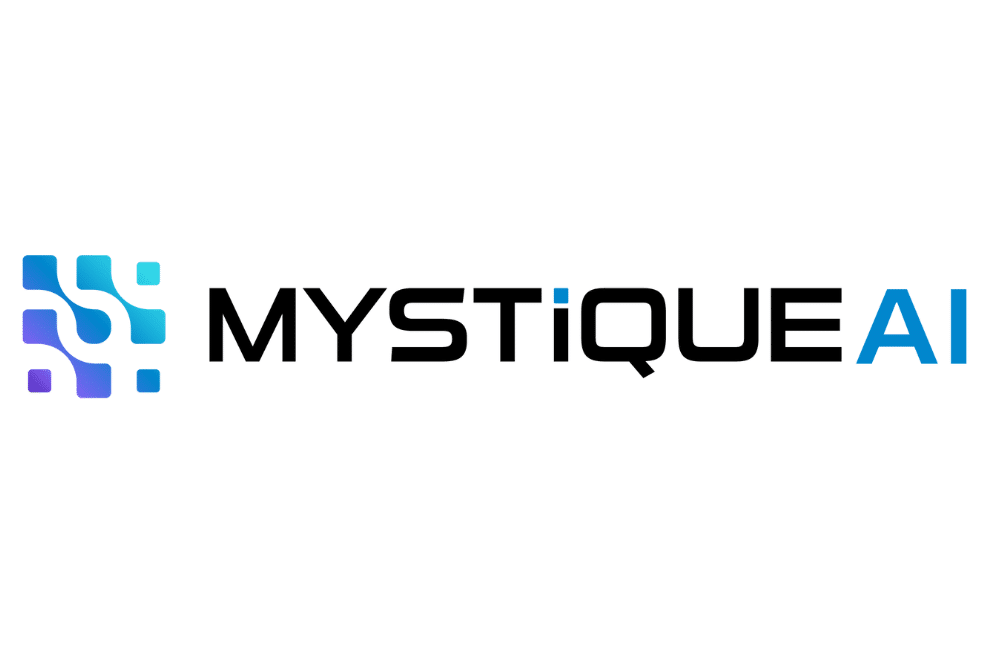The Broker’s Guide to Affinity Group Opportunities in Healthcare

While other brokers chase individual practices, smart brokers win entire doctor networks.
Healthcare transforms rapidly. Independent practices unite to survive payor pressures while maintaining autonomy. These affinity arrangements create massive opportunities for brokers who understand how to spot and win them.
Most brokers see a medical practice and think “group case.” Smart brokers see the bigger picture—networks, associations, and management companies connecting dozens of practices under one umbrella. While your competition fights over individual practices, you could write 500 lives with a single decision maker.
What Qualifies as an Affinity Opportunity?
Not every healthcare organization qualifies. The key lies in identifying groups that connect multiple doctor practices for business effectiveness—and have centralized decision-making power.
Professional Associations
Medical specialty associations offer the most obvious affinity opportunities. These organizations serve doctor members through education, advocacy, and shared resources. State medical societies, specialty groups like cardiology associations, and regional doctor networks all qualify. The critical factor: they provide value beyond benefits—they solve real business problems for members.
Management Services Organizations (MSOs)
MSOs help independent practices maintain autonomy while gaining scale benefits. They handle administrative functions like billing, credentialing, and payor negotiations. Because MSOs already centralize business decisions, they naturally fit group benefits programs. Member practices rely on the MSO for business guidance, making benefits decisions easier to coordinate.
Doctor Services Organizations (PSOs) and Health Services Organizations (HSOs)
These entities extend the MSO model by providing comprehensive business support to member practices. They handle everything from supply purchasing to technology implementation. PSOs and HSOs work because they’ve established trust and decision-making authority with member practices.
Doctor Networks: ACOs, IPAs, and Others
Accountable Care Organizations (ACOs) and Independent Practice Associations (IPAs) represent healthcare’s evolution toward value-based care. These networks coordinate care delivery and often share financial risk. Because they require significant cooperation between member practices, they excel as group benefits candidates.
The Common Thread
All successful affinity opportunities share three characteristics:
- Centralized Authority: A management entity either makes decisions for the entire organization or significantly influences member practices’ choices.
- Business Purpose Beyond Benefits: The primary relationship exists for operational reasons—cost reduction, payor negotiations, care coordination, or professional development. Benefits serve as a valuable add-on, not the main attraction.
- Established Trust: Member practices already rely on the central organization for business guidance. This existing trust makes benefits decisions much easier to coordinate.
What Doesn’t Qualify
Simply grouping practices together doesn’t create an affinity opportunity. A loose collection of practices without centralized decision-making won’t work. Similarly, organizations formed primarily to access group benefits lack the business foundation necessary for long-term success.
How to Identify Affinity Prospects in Your Market
Finding affinity opportunities requires detective work. These organizations hide their structure, and decision makers aren’t obvious. Start by mapping the healthcare landscape in your territory and looking for connections between practices.
Start with What You Know
Your existing doctor clients serve as your best intelligence source. During renewal meetings, ask about their business relationships. Questions like “Do you work with any management companies for billing or credentialing?” or “Are you part of any professional associations that help with business operations?” reveal potential affinity connections.
Pay attention when doctors mention shared services, joint purchasing agreements, or collaborative care arrangements. These conversations often uncover MSOs, IPAs, or informal networks that could become formal affinity opportunities.
Research Professional Associations
Every medical specialty has state and regional associations. Start with your state medical society’s website and work down to specialty groups. Look for associations offering business services beyond continuing education—those providing practice management support, group purchasing, or payor negotiations serve as prime candidates.
Don’t overlook dental associations, veterinary groups, and Advanced Practice Clinician organizations. The MGIS Affinity Program covers nurse practitioners, physician assistants, and CRNAs, expanding your potential market significantly.
Track Healthcare Business News
Local business journals and healthcare publications regularly report on practice acquisitions, new management companies, and care coordination initiatives. These stories reveal emerging affinity opportunities before they’re fully established.
Watch for announcements about:
- Independent practices joining ACOs or IPAs
- New MSOs launching in your market
- Hospital systems creating preferred provider networks
- Specialty groups forming shared service organizations
Use Online Resources
Use these databases to identify healthcare networks:
- CMS’s ACO list shows accountable care organizations in your area
- State licensing boards often list management service relationships
- Professional association directories reveal local chapters and leadership
- LinkedIn searches for “healthcare management,” “MSO,” or “practice administration” in your geographic area
Network with Healthcare Attorneys and Consultants
Healthcare attorneys, practice management consultants, and healthcare CPAs often know about affinity arrangements before they’re publicly announced. These professionals help structure MSOs, negotiate management agreements, and establish professional networks. Building relationships with them creates a pipeline of early intelligence about new opportunities.
Look for Growth Patterns
Identify the largest independent practice groups in your market, then research whether they’re expanding through acquisition or affiliation. Growing practices often need management infrastructure, creating opportunities for MSO relationships or formal networks.
Warning Signs to Watch
Not every healthcare organization is ready for an affinity program. Avoid groups where:
- Individual practices make all decisions without central coordination
- The relationship is too new (less than two years for most member practices)
- The primary purpose centers on accessing group benefits
- Significant turnover exists in membership or leadership
Building Your Prospect List
Create a systematic approach to tracking potential affinity opportunities:
- Map existing client relationships to identify network connections
- Research all professional associations in your territory
- Monitor healthcare business news for network announcements
- Build relationships with healthcare professionals who structure these arrangements
- Track growth patterns of large independent practices
The most successful affinity brokers understand their local healthcare ecosystem. They know which practices work together, which associations provide business value, and which management companies expand. This knowledge creates opportunities while your competition cold-calls individual practices.
Why Affinity Groups Need Specialized Solutions, Not Standard Group Products
Standard group disability insurance fails affinity organizations because it treats doctors like corporate employees. This fundamental mismatch creates coverage gaps that hurt both doctors and the sponsoring organization’s credibility.
The Corporate Model Doesn’t Work for Doctors
Traditional group disability policies assume a 40-hour work week. Most doctors work 50-59 hours per week. When Dr. Smith’s cardiology practice reduces from 60 to 40 hours weekly due to a hand injury, standard group disability pays zero benefits—carriers consider 40 hours “full-time.” This represents a devastating 33% income loss with no compensation.
MGIS Disability Guard for DoctorsTM recognizes this income loss and pays proportional benefits, understanding that doctors don’t follow typical corporate work schedules.
Standard policies also include “maximum capacity” language that lets carriers determine how many hours a doctor could theoretically work. The carrier can reduce benefits based on this assumption, whether the doctor actually earns that income or not. This subjective limitation devastates doctors facing partial disabilities.
Generic Job Descriptions Miss the Mark
Standard disability policies define disability based on generic occupational categories. A “surgeon” remains a “surgeon,” regardless of specialty or specific procedures performed.
Specialized coverage uses CPT codes to define disability based on the actual procedures each doctor performed before becoming disabled. This granular approach provides more accurate and generous coverage when doctors face partial disabilities affecting specific skills.
Why Affinity Groups Demand Better
Affinity organizations exist to provide value their members cannot access independently. Offering standard group disability insurance undermines this value proposition. Members expect coverage that matches or exceeds their individual policies, not generic corporate benefits.
The sponsoring organization’s credibility depends on delivering superior value. When a member doctor discovers their “group” coverage provides less protection than individual coverage, the entire affinity relationship suffers.
With doctor shortages creating competitive pressure, affinity groups need every advantage in attracting and retaining members. Specialized disability coverage becomes a differentiator that independent practices cannot match.
Doctors understand disability insurance better than most professionals. They bought individual policies in medical school and recognize quality coverage when they see it. Offering inferior group coverage signals that the affinity organization doesn’t understand or value its members’ needs.
The Revenue Opportunity That Changes Everything
A single MGIS affinity program generates $500,000 in annual premium across 500 covered lives. Your commission: $65,000 annually from one relationship.
Your Annual Income Breakdown
- Base commission: $50,000 annually (10% of premium)
- Reliance Matrix bonus: Additional $15,000 average (3% of premium)
- Total first-year income: $65,000 from one affinity relationship
Compare that to individual practice sales. To generate the same income, you’d need 50 separate 10-doctor practices at $1,300 per practice annual commission. That means 50 different sales presentations, 50 renewal meetings, 50 relationships to maintain.
The Scale Advantage
Instead of convincing 50 practice owners one by one, you work with a central decision maker who controls benefits decisions for the entire network. This concentration creates:
- Faster sales cycles: One decision maker versus dozens of individual practice owners
- Higher close rates: The central organization already established trust with member practices
- Simplified service: One renewal meeting instead of 50 separate conversations
- Stable revenue: Affinity programs have lower turnover than individual practice relationships
Premium Density Creates Efficiency
The $1000 per covered life reflects specialized doctor disability insurance. Doctors need higher coverage limits and specialized features, generating significantly more premium than typical group disability cases.
Consider the difference:
- Corporate group disability: 500 lives at $400 per person = $200,000 premium, $20,000 commission
- Doctor affinity program: 500 lives at $1000 per person = $500,000 premium, $65,000+ commission
Successful affinity programs grow over time. As the sponsoring organization adds member practices or existing practices hire more doctors, your commission base expands automatically. Many programs start with 100-200 lives and grow to 500+ over several years.
Steps to Approach and Win Affinity Business
Selling affinity programs requires a different approach than individual practice sales. You’re not selling insurance—you’re positioning yourself as a strategic partner who understands the affinity organization’s mission and can deliver value that strengthens their member relationships.
Step 1: Research the Organization Thoroughly
Before any contact, understand the affinity group’s structure, mission, and challenges. Review their website, recent announcements, and leadership profiles. Identify their value proposition to members and how they differentiate from competitors.
Key questions to research:
- How long has the organization existed?
- What services do they provide beyond basic association functions?
- Who are the key decision makers?
- What challenges do they face in member recruitment or retention?
- Do they currently offer any group benefits?
This preparation demonstrates professionalism and helps you tailor your approach to their specific situation.
Step 2: Identify the Right Entry Point
Affinity organizations have complex decision-making structures. Find the person who either makes benefits decisions or significantly influences them. This might be:
- Executive Director of a professional association
- CEO of an MSO or management company
- Benefits Committee Chair
- Chief Operating Officer
Avoid starting with junior staff who lack decision-making authority. Your initial contact should be with someone who can champion your solution internally.
Step 3: Lead with Their Business Challenges
Open conversations by discussing the organization’s goals, not your products. Ask about their member recruitment and retention challenges, administrative burdens, or competitive pressures.
Effective opening questions:
- “What benefits matter most to your members when they’re considering joining competing organizations?”
- “How do you differentiate your value proposition from what practices can achieve independently?”
- “What administrative challenges keep you up at night?”
This approach positions you as a business consultant, not an insurance salesperson.
Step 4: Demonstrate Specialized Expertise
Once you understand their challenges, show how specialized disability coverage addresses their specific needs. Use concrete examples that resonate with their situation:
- “Your member practices compete for doctors in a tight labor market. Specialized disability coverage gives them a recruiting advantage that independent practices cannot match.”
- “Standard group disability would undermine your credibility with doctor members who already understand quality coverage.”
Step 5: Present the MGIS Affinity Advantage
Explain how the MGIS Affinity Program solves their unique challenges:
- Member Value: IDI-quality coverage on a group platform provides benefits members cannot access independently
- Administrative Simplicity: One dedicated account manager, flexible billing, common renewal dates
- Customization: Each practice can have its own plan design while maintaining program unity
- Growth Accommodation: New practices can join anytime but renew with the group
Bring in your MGIS Regional Sales Vice President for complex cases or final presentations. Their specialized knowledge and ability to customize solutions often closes deals that generic approaches cannot.
Step 6: Plan for Implementation Success
Once you have agreement in principle, work with the organization to develop a detailed implementation plan:
- Member communication strategy
- Enrollment timeline and process (typically 6-12 months from initial contact to implementation)
- Administrative setup and billing preferences
- Success metrics and review schedule
Common Mistakes to Avoid
- Don’t lead with product features—start with business value
- Don’t assume one decision maker—understand the approval process
- Don’t rush the sales cycle—affinity decisions take time but generate 5-10 years of stable renewal income
- Don’t ignore implementation details—successful launch determines long-term success
- Don’t forget ongoing service—affinity relationships require continuous attention
The Long Game
Affinity sales cycles typically run 6-12 months from initial contact to implementation, but generate 5-10 years of stable renewal income. This timeline reflects the complexity of coordinating multiple practices and the importance of the decision to the organization’s credibility.
Successful affinity brokers think strategically and build relationships over time. They become trusted advisors who understand healthcare’s evolution and help affinity organizations navigate change successfully.
Your Next Move: Capture the Opportunity Before Your Competition Does
While your competition chases $1,300 annual commissions from individual practices, a single affinity relationship can generate $65,000 annually—with organic growth potential that increases your income year after year.
The doctor shortage creates unprecedented leverage for affinity organizations. They need specialized solutions to attract and retain members. The brokers who master this opportunity now will dominate their markets for the next decade.
The affinity opportunity is real. The revenue is proven. The only question is whether you’ll seize this advantage while others struggle with individual practice sales.
Don’t let another broker in your market discover what you now know. Contact MGIS today and transform one relationship into a career-defining revenue stream.


